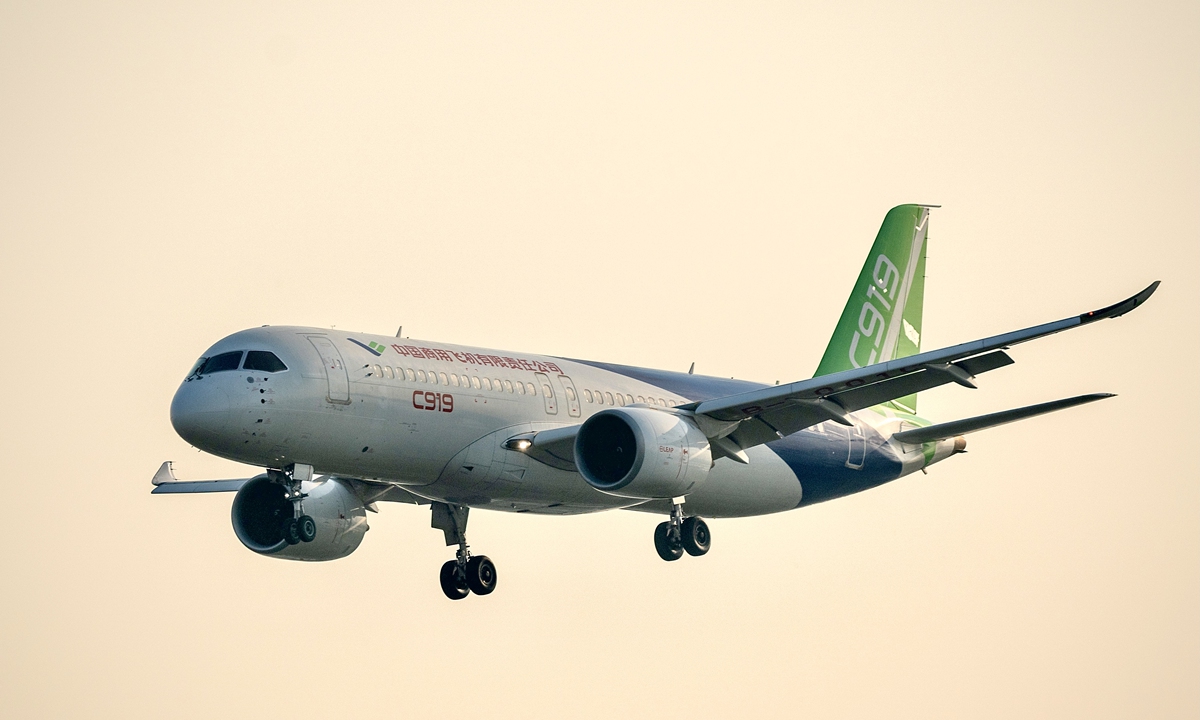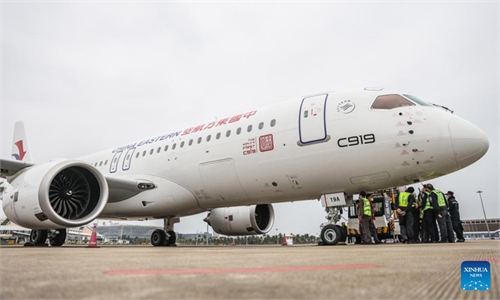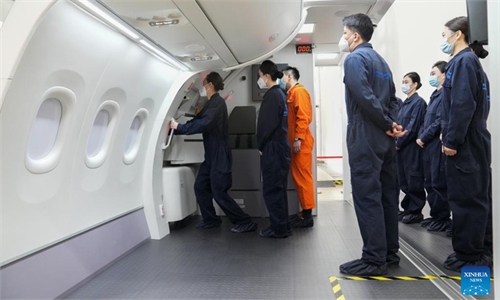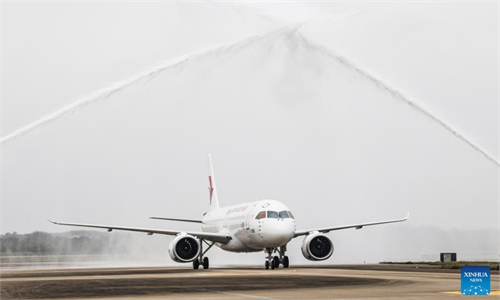
C919 Photo: VCG
Recent media reports suggesting that the C919 aircraft, China's first domestically-developed passenger jet, is close to its commercial operation has continued to capture widespread attention. The rapid progress of the C919 exemplifies China's unshakeable resolve and remarkable achievements in pursuing high-end manufacturing despite challenges.After the delivery of the world's first C919 in December 2022, China Eastern Airlines started a total of 100 hours of verification flights on December 26, laying the foundation for commercial flights, which are expected to begin in the first half of 2023, according to cctv.com.
In late January, the information of a flight operated by the C919 aircraft, scheduled on February 28, appeared on the app of China Eastern Airlines, but the airline said it's just a test. The commercial operation of the C919 may start in late February or early March, news portal caijing.com.cn reported recently, citing anonymous sources.
But just ahead of the first commercial operation, a market rumor surfaced recently that in a recent flight test, a C919 aircraft, which was originally scheduled to fly from Shanghai to Beijing and then to Hefei, didn't arrive in Hefei but instead returned to Shanghai due to problems with its left-hand thrust. There has been no official comment on the matter, so the accuracy of relevant reports cannot be verified.
However, with the C919 so close to its commercial operation, nothing will stop the aircraft from reaching that milestone eventually. It needs to be acknowledged that when it comes to the development of high-end manufacturing products like the C919 aircraft, things cannot always go smooth. Since the start of the C919 project about 16 years ago, Chinese firms and engineers must have overcome countless challenges to reach where the C919 is now.
It is no easy thing to develop the aviation industry, which is known as the "crown jewels" of the modern manufacturing industry. Even for developed countries like Japan, aircraft project could fail due to various reasons. Not long ago, Japan reportedly abandoned plans to build its first domestically developed passenger jet after years of technical setbacks and soaring costs, as Mitsubishi Heavy Industries announced to cancel the public-private SpaceJet project. Japan announced in 2008 the launch of its SpaceJet project, just two years after China's launch of the C919 aircraft project in 2006.
By contrast, in about the same amount of time, China has made huge efforts to carry forward the C919 project from research and development to the aircraft delivery, with a total of nearly 300,000 industry professionals participating in technological breakthroughs. So far Commercial Aircraft Corp of China has received more than 1,200 orders, according to media reports.
To a certain extent, the delivery and mass production of the C919 aircraft is actually a manifestation of China's progress in high-end manufacturing industry. Whether or not China can have its own domestically designed and built aircraft doesn't just affect China's share in the commercial aircraft market. What's more important is that behind the manufacturing of aircraft like the C919 is a comprehensive high-end industrial chain.
The C919 not only marks a major historical breakthrough in China's aviation industry, but also a major achievement of China's innovation-driven development strategy. As a developing power, China needs to make greater breakthroughs and progress in high-tech fields so as to achieve economic transformation and sustainable development. And developing the C919 just meets such needs.
The breakthroughs China has achieved in terms of materials and technologies during the development of C919 could bring benefits to almost every aspect of high-end manufacturing and industrial chains. In this way, China's industries will be able to see an overall upgrading in the future, which will be of great significance for China to break the US' high-tech containment strategy and promote the economic structural transformation in the long run.



